How To Measure (And Report) Your Social Media ROI (+ 21 Example Metrics)

Does your social media presence do anything for your brand?
Have you wondered if your hundreds of shares and saves on social media translate into sales?
If you’re not confident in answering these questions, don't worry. This guide will take you through a step-by-step process to track and report your social media return on investment (ROI).
But first, let’s get into the benefits of measuring social media ROI.
Why measure social media ROI?
Showcase the impact of social media marketing on the business:
Measuring social media ROI answers a fundamental question:
Do my social media marketing efforts help improve my business's bottom line?
Data from Hootsuite shows people use social media to connect with brands and discover new products. If your content marketing strategy relies on organic social media, then it’s worth having a process to measure social media ROI to ensure your efforts reach their target audience.
Clients aren’t as interested in the number of likes your latest TikTok post had. But tell them how your TikTok posts have driven website traffic or influenced sales, and you’ll have their attention.
Aid client and executive buy-in
Attributing social media ROI helps you discuss social media budgets or assess campaign effectiveness.
Executives are naturally concerned with measuring marketing campaign effectiveness, so start with aligning the value of your social media efforts to the KPIs your client and client’s bosses care about, depending on your agreed goals.
Keeps your social media campaign on track
Optimizing social media is a long game, and having reports to track your progress can encourage your team, client, and any executives looking for evidence of social media ROI.
Latasha James from the Freelance Friday podcast emphasizes the value of regular reporting and tracking social media ROI.
Having reports to track your progress over time is vital. You might think nothing is happening, but go back six months and see growth over time. Tracking also helps you understand the types of content that’s worked and what hasn't. Seeing that in a streamlined, clean format is valuable for social media managers and marketers.
How do you create a comprehensive report for social media ROI? We'll show you how.
4 simple steps to track your client’s social media ROI
Step 1: Start with a clear objective
What is the role of social media in your client’s business?
It’s helpful to be as specific as possible with your business goals to identify the correct social networks and social media marketing strategies to focus on.
Let’s say your client’s goal is to make more money using social media. Does this mean:
- Selling more of a particular product type?
- Expand further into a new market?
- Reactivate their existing follower base or encourage repeat purchases?
Understand your client’s sales funnel and where social media fits into their sales process. With an obvious goal defined, you can work backward to show how your efforts produce results with a monetary value.
Besides sales, other social media goals include building trust with your audience or improving brand awareness.
Tip: Use the OKR system or SMART goals to agree on a joint action plan with your client.
Step 2: Define your key performance indicators (KPIs)
Now, map those business goals to a social media goal.
Use KPI examples that measure that social media goal on your social media dashboard.
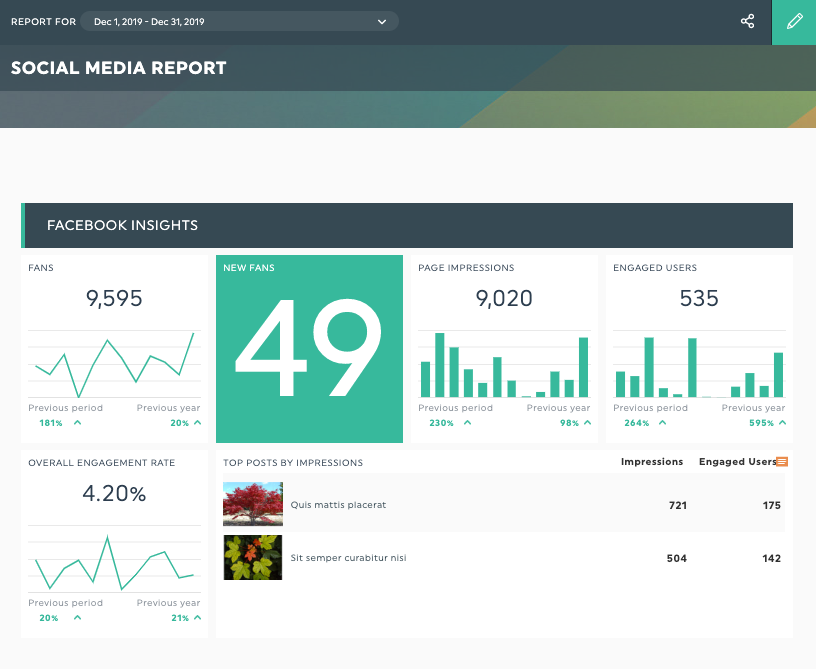
Get this social media report with your own data!
So, if you’re working with an e-commerce brand’s marketing team looking to improve its Instagram sales, your digital marketing objectives could be to drive traffic to their product pages and increase product button clicks and sales on Instagram Shopping. These two metrics will also be what you’re reporting on.
Step 3: Establish a robust tracking system
Set up your social media tracking pixels correctly:
Each social media platform comes with a tracking pixel to track visitor activity and social media marketing ROI.
Platform-specific guides for each social media tool:
- How to set up and install a Meta Pixel (formerly the Facebook pixel)
- Installing the LinkedIn pixel
- TikTok Pixel
- Twitter (X) Pixel
Use URL tracking and a multi-touch attribution model for social media attribution:
URL tracking tracks the metrics for all channels and content individually to show clients which pages and marketing channels brought the most traffic or leads.
Speaking on the benefits of URL tracking, Louisa McGrath from DashThis partner ClickMeter shared: “URL tracking avoids metrics mayhem from happening as it’s based on link redirects.”
Read more: UTM Parameters Explained: a Marketer’s Guide
Use a multi-touch attribution model to measure the impact of your social media channels. Customers come from multiple sources or follow a non-linear path to purchase - i.e., returning to the website many times through different channels before purchasing.
Writing for Lenny’s newsletter, Michael Kaminsky and Mike Taylor explain why multi-touch attribution works best:
When tracking is discussed, “last touch” or “last click” attribution is always mentioned as the default form of measurement on the internet. Last touch is easy to implement and understand, but it’s flawed because it gives zero credit to “touches” from other channels. Multi-touch attribution is a step more advanced, where you assign credit to different channels that a user interacted with (touched), based on predefined rules or a statistical model.
3 ways to build UTM codes to track your social media performance with URL tracking
- bit.ly URLs (free)
- Google Analytics and Google’s UTM code builder (free)
- Build UTM codes with ClickMeter which integrates with DashThis reports
Here’s Michael and Mike on where to begin building a robust tracking process:
“Start with a tracking plan, which details what you want to track and when that occurs. This can take the form of an Excel spreadsheet on up to a dynamically updated event tracking system that’s integrated with your software deployment process or tag manager, depending on your required level of sophistication.”
Bonus: Besides quantitative metrics, monitor qualitative feedback on your social media content. Positive comments from your audience or customers that your content was helpful can also be markers of positive social media ROI.
It’s helpful to track the content of your social media comments or check in with your sales and customer success teams to see if people have mentioned your social media content and whether it influenced their decisions or sales conversations.
Step 4: Bring all your metrics together with a reporting tool
Finally, use a reporting tool to report on your social campaigns and ads.
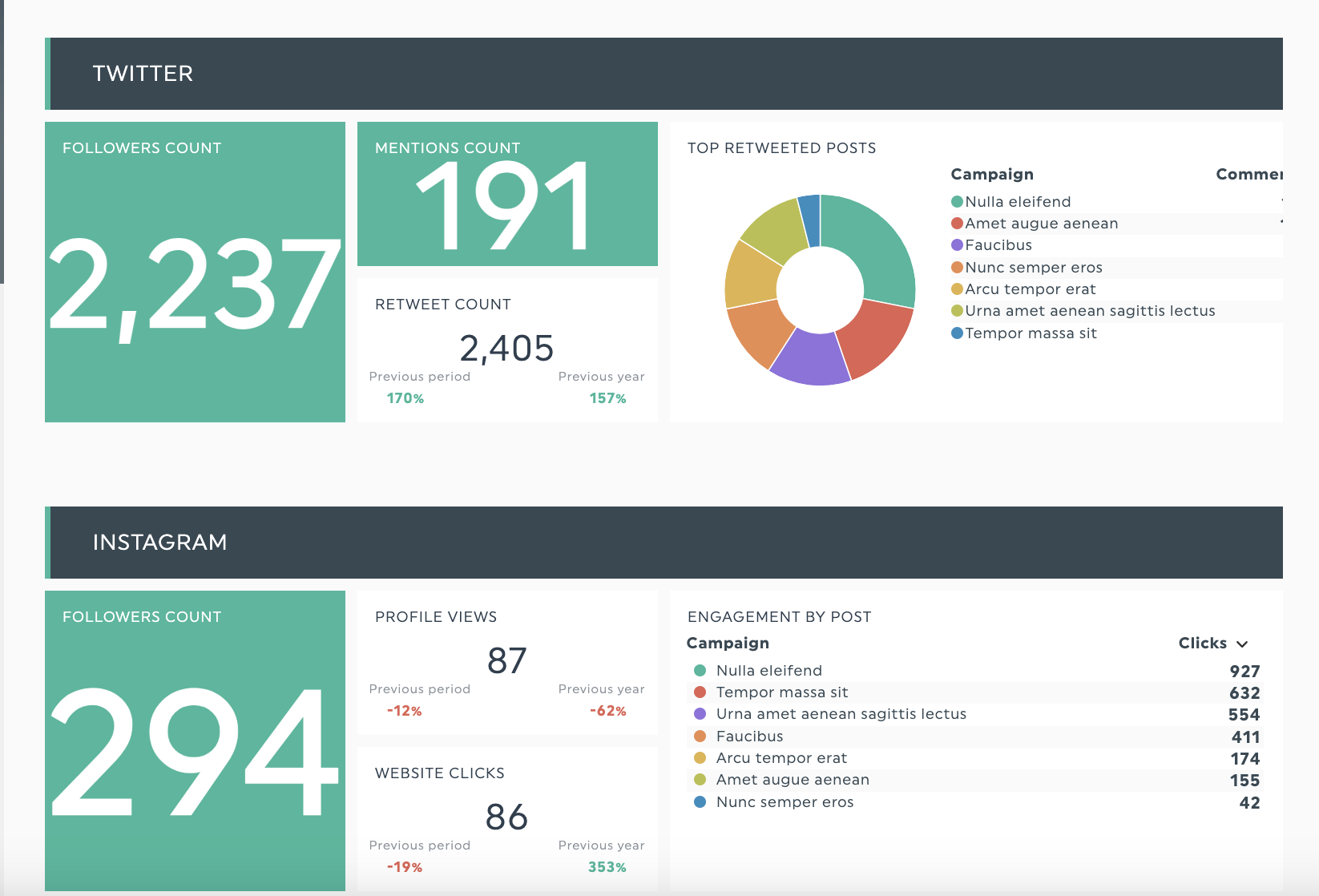
DashThis’s social media dashboard makes it easy to compare social media ROI across platforms. Get this social media report with your own data!
DashThis integrates with all major social media platforms, making gathering your data in one place easy. Tap on DashThis’s Google Sheets integration and CSV file tools to add data to your DashThis dashboard.
Top social media ROI metrics marketers should track
Engagement metrics:
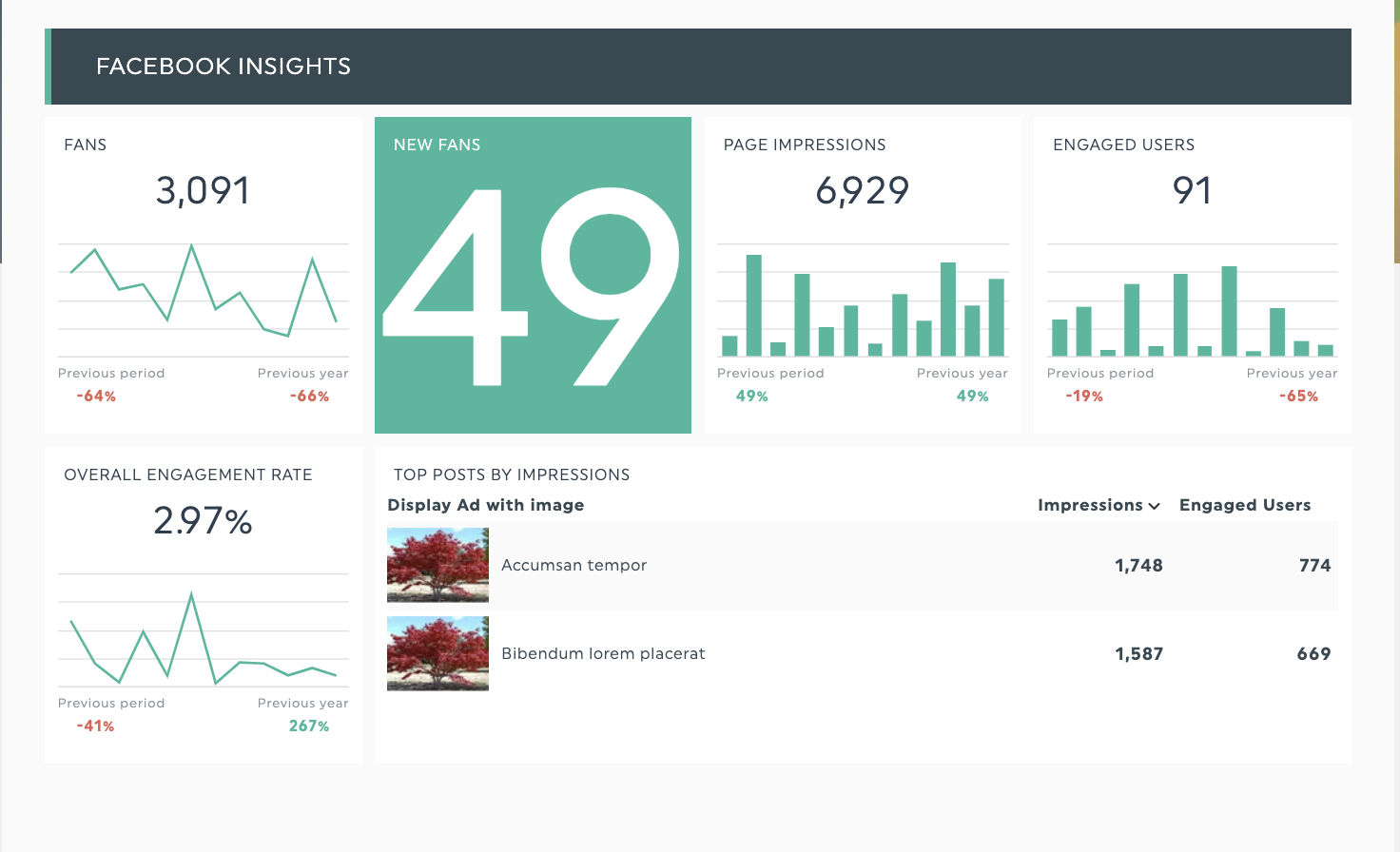
Engagement metrics show if people interact with your social media content and if they find your content valuable.
Example engagement metrics:
- Engagement rate
- Clickthrough rate
- Comments
- Shares
- Saves
- Retweet/reposts
- Clicks
Reach and impressions metrics:
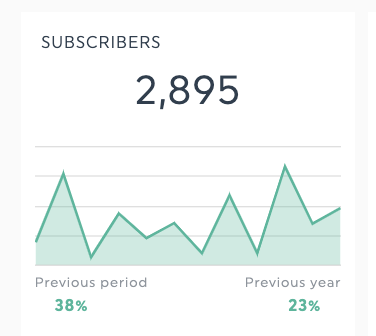
Measuring reach and impression metrics helps you monitor how many people have seen your content.
Example reach metrics:
- Impressions
- Number of subscribers, followers and fans
- Reach
- Follower count/growth rate
- Impression share
- Brand mentions
Conversion metrics
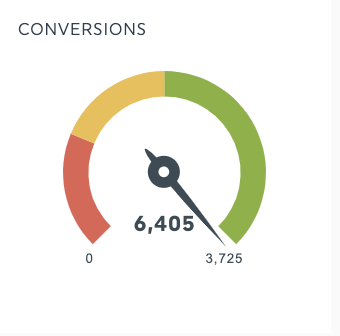
Conversion metrics usually link to sales or lead generation but can also refer to an action that moves people down your client’s sales funnel - like downloading a research report from a social media campaign to turn your subscriber into an active lead.
Example conversion KPIs and metrics
- Conversion rate
- Form completion rate
- Leads generated
- Cost per acquisition
- Return on ad spend (ROAS)
- ROI
Creating a social media ROI report with DashThis
But wait, why do I need a reporting tool if each platform has native social media analytics?
Well, consider how much time you need to go into LinkedIn (and your other social media tools), export, and format raw data into a comprehensive report per week.
Now multiply that with the number of clients you need to do weekly reporting for. How many hours does that take? How much staff time and money are you spending on manual reporting?

DashThis pricing page includes a handy ROI calculator you can use to see how much time and money you spend on manual reporting tasks and how much you can gain in productivity and efficiency.
Reporting tools help simplify this manual process and transform your raw social media metrics into a social media ROI dashboard.
Furthermore, DashThis integrates with all major social media platforms, including TikTok, Facebook, Instagram and LinkedIn, in a few clicks.
Our dashboards provide a solid foundation to add context and analysis, compare ROI across social media platforms, or track KPIs over time from a single dashboard.
To get started, sign up for your 15-day trial of DashThis and connect your data sources. Once done, select one of our pre-populated report templates or drag-and-drop metrics to build your report.
Social media report template
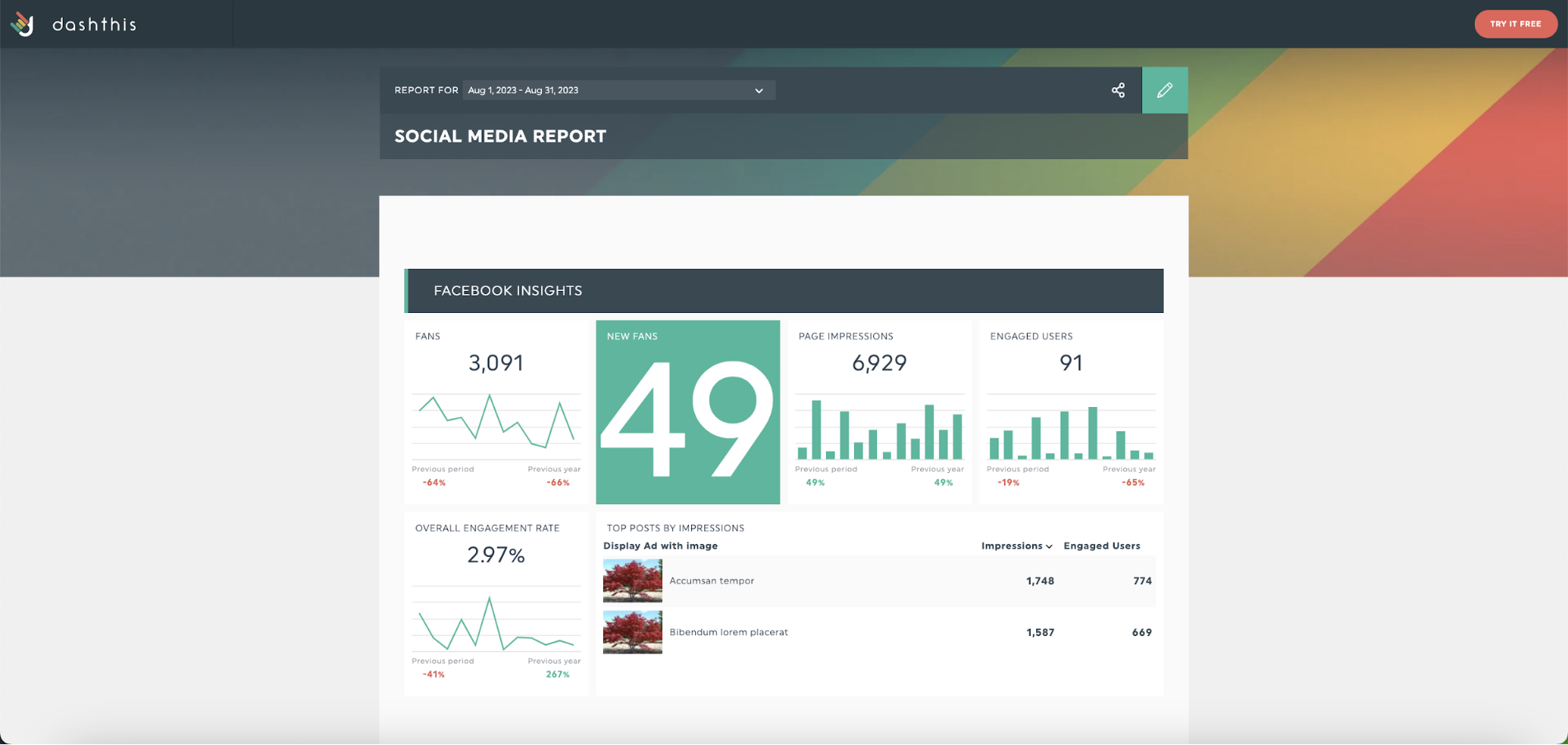
Get this social media report with your own data!
Our social media report template turns your messy social media data into beautifully formatted reports without screaming at your computer.
Perfect for showing your social media ROI for your following client campaign progress report, pitch for a new campaign, or contract renewal for an existing client.
By clearly outlining your metrics across all social media accounts in one place—conversions, ROI, and whatnot— you’re well equipped to efficiently answer burning questions from your client.
Use this report to update clients on your progress, create clear campaign closing reports, or pitch a new campaign or project to existing clients.
Automate your social media reporting with DashThis
Social media moves quickly, and if you’re still assembling reports by hand for all your clients, there’s a better way forward.
Use an automated reporting tool like DashThis that automatically pulls your social media data into a visually attractive dashboard that you can use in client review meetings and make your agency look good in front of your clients. They’ll thank you later.
Ready to start tracking your social media ROI?
Read More
Don’t miss out!
Automate your reports!
Bring all your marketing data into one automated report.
Try dashthis for free

